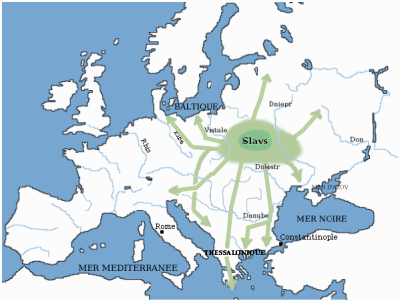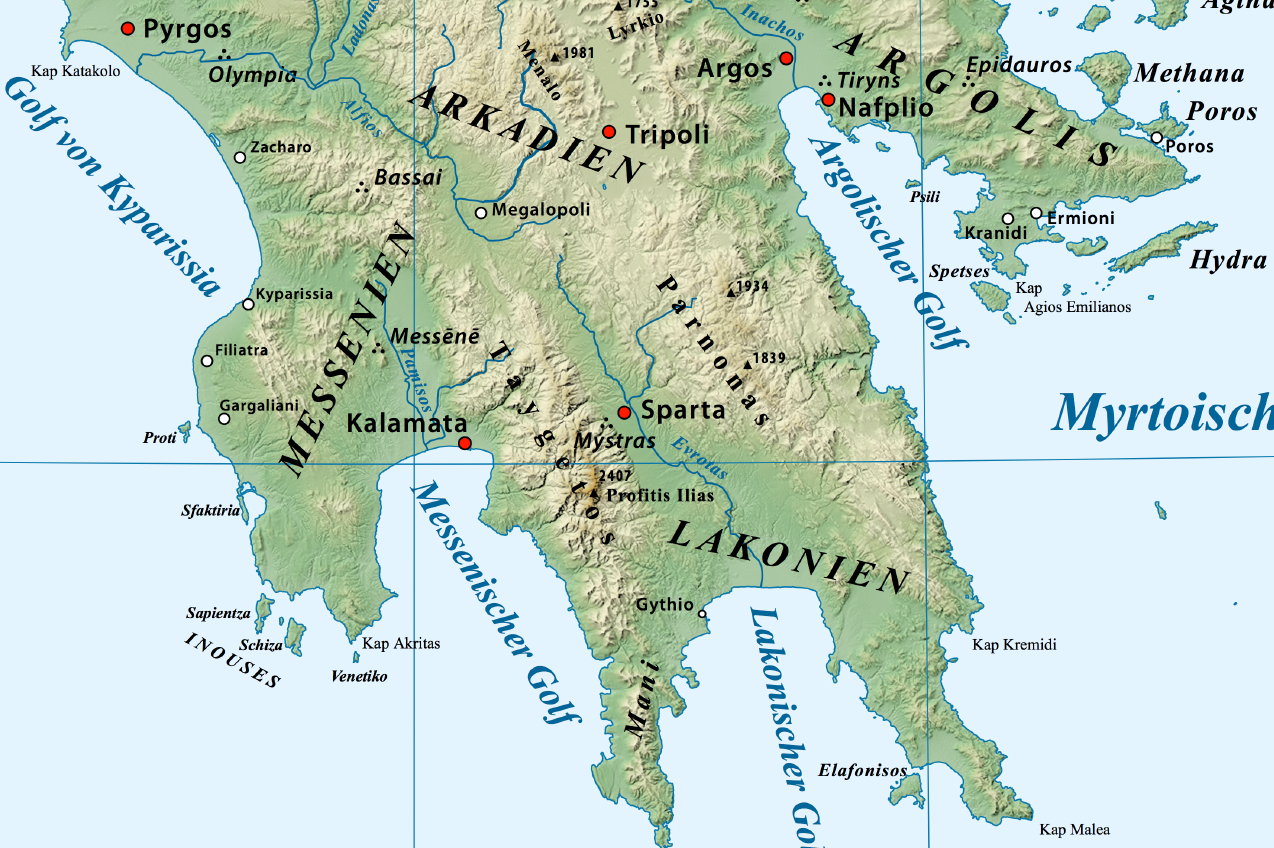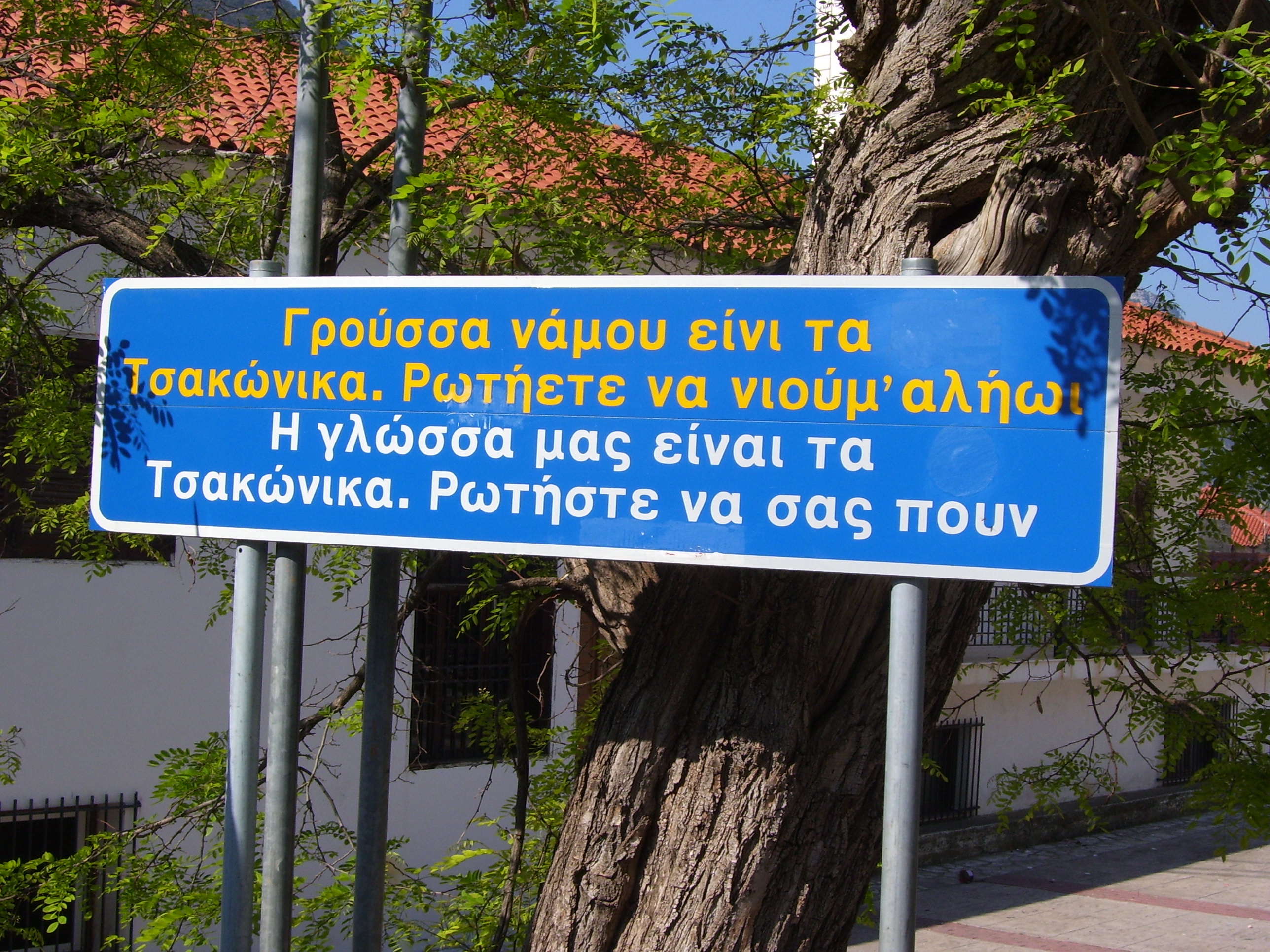|
Mistra
Mystras or Mistras (), also known in the '' Chronicle of the Morea'' as Myzethras or Myzithras (Μυζηθρᾶς), is a fortified town and a former municipality in Laconia, Peloponnese, Greece. Situated on Mount Taygetus, above ancient Sparta, and below a Frankish castle, it served as the capital of the Byzantine Despotate of the Morea in the 14th and 15th centuries, experiencing a period of prosperity and cultural flowering during the Palaeologan Renaissance, including the teachings of Gemistos Plethon. The city also attracted artists and architects of the highest quality. Mystras remained inhabited throughout the Ottoman period, when Western travellers mistook it for ancient Sparta. In the 1830s, it was abandoned and the new town of Sparta was built, approximately eight kilometres to the east. Since the 2011 local government reform it is part of the Sparta municipality. As an exceptionally well-preserved example of a Byzantine city and because of its testimony to the develo ... [...More Info...] [...Related Items...] OR: [Wikipedia] [Google] [Baidu] |
William II Of Villehardouin
William of Villehardouin (; Kalamata, 1211 – 1 May 1278) was the fourth prince of Achaea in Frankish Greece, from 1246 to 1278. The younger son of Prince Geoffrey I, he held the Barony of Kalamata in fief during the reign of his elder brother Geoffrey II. William ruled Achaea as regent for his brother during Geoffrey's military campaigns against the Greeks of Nicaea, who were the principal enemies of his overlord, the Latin Emperor of Constantinople Baldwin II. William succeeded his childless brother in the summer of 1246. Conflicts between Nicaea and Epirus enabled him to complete the conquest of the Morea in about three years. He captured Monemvasia and built three new fortresses, forcing two previously autonomous tribes, the Tzakones and Melingoi, into submission. He participated in the unsuccessful Egyptian crusade of Louis IX of France, who rewarded him with the right to issue currency in the style of French royal coins. In the early 125 ... [...More Info...] [...Related Items...] OR: [Wikipedia] [Google] [Baidu] |
Gemistos Plethon
Georgios Gemistos Plethon (; /1360 – 1452/1454), commonly known as Gemistos Plethon, was a Greek scholar and one of the most renowned philosophers of the Late Byzantine era. He was a chief pioneer of the revival of Greek scholarship in Western Europe. As revealed in his last literary work, the ''Nomoi'' or ''Book of Laws'', which he circulated only among close friends, he rejected Christianity in favour of a return to the worship of the classical Hellenic gods, mixed with ancient wisdom based on Zoroaster and the Magi. In 1438–1439 he reintroduced Plato's ideas to Western Europe during the Council of Florence, in a failed attempt to reconcile the East–West schism. Plethon also formulated his political vision in several speeches throughout his life. The boast in one of the speeches that "We are Hellenes by race and culture" and his proposal of a reborn Byzantine Empire following a utopian Hellenic system of government centered in Mystras, have generated discussion ab ... [...More Info...] [...Related Items...] OR: [Wikipedia] [Google] [Baidu] |
Hagia Sophia, Mystras
The Church of Hagia Sophia ( ) or Holy Wisdom is a Byzantine church in the fortified medieval town of Mystras, Peloponnese, Greece. It forms part of the wider archaeological site of Mystras, which is designated as a World Heritage Site by UNESCO. Built within the palace complex, it functioned as the royal palace church until Ottoman conquest of Mystras and its conversion into an Islamic mosque. Hagia Sophia of Mystras was made back into a Christian church when Greece achieved independence during the early nineteenth century. History Hagia Sophia was built in the fourteenth century by the first despot of Mystras, Manuel Kantakouzenos, whose monograms are preserved on marble plaques of the church. The church was originally dedicated to Jesus Christ the Life Giver () and was the ''catholicon'' of the men's monastery, bearing the same name, as can be seen from the seal of the Patriarch of Constantinople Philotheus I of Constantinople, Philotheus, from the year 1365, with which it was ... [...More Info...] [...Related Items...] OR: [Wikipedia] [Google] [Baidu] |
Principality Of Achaea
The Principality of Achaea () or Principality of Morea was one of the vassal states of the Latin Empire, which replaced the Byzantine Empire after the capture of Constantinople during the Fourth Crusade. It became a vassal of the Kingdom of Thessalonica, along with the Duchy of Athens, until Thessalonica was captured by Despotate of Epirus, Epirus in 1224. After this, Achaea became the dominant power in Greece, lasting continuously for 227 years and cumulatively for 229. Foundation Achaea was founded in 1205 by William of Champlitte and Geoffrey I of Villehardouin, who undertook to conquer the Peloponnese on behalf of Boniface I, Marquis of Montferrat, Boniface of Montferrat, Kingdom of Thessalonica, King of Thessalonica. With a force of no more than 100 knights and 500 foot soldiers, they took Achaea and Medieval Elis, Elis, and after defeating the local Greeks in the Battle of the Olive Grove of Koundouros, they became masters of the Morea. The victory was decisive, and after t ... [...More Info...] [...Related Items...] OR: [Wikipedia] [Google] [Baidu] |
Morea
Morea ( or ) was the name of the Peloponnese peninsula in southern Greece during the Middle Ages and the early modern period. The name was used by the Principality of Achaea, the Byzantine province known as the Despotate of the Morea, by the Ottoman Empire for the Morea Eyalet, and later by the Republic of Venice for the short-lived Kingdom of the Morea. Etymology There is some uncertainty over the origin of the medieval name "Morea", which is first recorded in the 10th century in the Byzantine chronicles. Traditionally, scholars thought the name to have originated from the word ''morea'' (μορέα), meaning morus or mulberry, a tree which, though known in the region from the ancient times, gained value after the 6th century, when mulberry-eating silkworms were smuggled from China to Byzantium. The British Byzantinist Steven Runciman suggested that the name comes "from the likeness of its shape to that of a mulberry leaf". History After the conquest of Constantinople by ... [...More Info...] [...Related Items...] OR: [Wikipedia] [Google] [Baidu] |
Despotate Of The Morea
The Despotate of the Morea () or Despotate of Mystras () was a province of the Byzantine Empire which existed between the mid-14th and mid-15th centuries. Its territory varied in size during its existence but eventually grew to include almost all the southern Greece, Greek peninsula now known as the Peloponnese, which was known as the Morea during the medieval and early modern periods. The territory was usually ruled by one or more sons or brothers of the current Byzantine emperor, who were given the title of ''despotes'' (in this context it should not be confused with despotism). Its capital was the fortified city of Mystras, near ancient Sparta, which became an important centre of the Palaiologan Renaissance. History The Despotate of the Morea was created out of territory seized from the Franks, Frankish Principality of Achaea. This had been organized from former Byzantine territory after the Fourth Crusade (1204). In 1259, the Principality's ruler William II Villehardouin los ... [...More Info...] [...Related Items...] OR: [Wikipedia] [Google] [Baidu] |
Peloponnese (region)
The Peloponnese Region (, ) is a region in southern Greece. It borders Western Greece to the north and Attica to the north-east. The region has an area of about . It covers most of the Peloponnese peninsula, except for the northwestern subregions of Achaea and Elis which belong to Western Greece and a small portion of the Argolid peninsula that is part of Attica. Administration The Peloponnese Region was established in the 1987 administrative reform. With the 2011 Kallikratis plan, its powers and authority were redefined and extended. Along with the Western Greece and Ionian Islands regions, it is supervised by the Decentralized Administration of Peloponnese, Western Greece and the Ionian Islands based at Patras. The region is based at Tripoli and is divided into five regional units (pre-Kallikratis prefectures), * Arcadia, * Argolis, * Corinthia, * Laconia and * Messenia, which are further subdivided into 26 municipalities. The largest city of the ... [...More Info...] [...Related Items...] OR: [Wikipedia] [Google] [Baidu] |
Palaeologan Renaissance
The Palaeologan Renaissance or Palaiologan Renaissance is the final period in the development of Byzantine art. Coinciding with the reign of the Palaiologoi, the last dynasty to rule the Byzantine Empire (1261–1453), it was an attempt to restore Byzantine self-confidence and cultural prestige after the empire had endured a long period of foreign occupation. The legacy of this era is observable both in Greek culture after the empire's fall and in the Italian Renaissance. Scholars of the time utilized several classical texts. History Following the Sack of Constantinople in 1204, the Crusaders established a Latin Empire to rule what had been Byzantine territory. Extensive looting took place in the fallen capital, and many relics and art treasures were shipped back to Western Europe. Seeking refuge in unconquered remnants of their empire, the Byzantine elite formed governments-in-exile at Nicaea, Trebizond, and Epirus.Cormack 2000, pg. 198. These new political entities continue ... [...More Info...] [...Related Items...] OR: [Wikipedia] [Google] [Baidu] |
Melingoi
The Melingoi or Milingoi () were a Slavic tribe that settled in the Peloponnese in southern Greece during the Middle Ages. In the early decades of the 7th century, Slavic tribes (Sclaveni) settled throughout the Balkans following the collapse of the Byzantine Empire's defense of the Danube frontier with some groups reaching as far south as the Peloponnese. The Sclaveni often settled in small groups (i.e., families and clans) and their demographic impact in mainland Greece was both weak and diffuse. Of these, two groups are known by name from later sources, the Melingoi and the Ezeritai, of whom the Melingoi settled on the western slopes of Mount Taygetos. The origin and etymology of the name ''Melingoi'' is unknown. Etymology Their name probably derives from Slavic adjective "*milъ" (sweet). Slavic form of their name possibly sounded like "*Milenьki > *Milenьci", and some scholars related it to the early Slavic tribe of Milceni. History Like the Ezeritai, the Melingoi are f ... [...More Info...] [...Related Items...] OR: [Wikipedia] [Google] [Baidu] |
Slavs
The Slavs or Slavic people are groups of people who speak Slavic languages. Slavs are geographically distributed throughout the northern parts of Eurasia; they predominantly inhabit Central Europe, Eastern Europe, Southeastern Europe, and Northern Asia, though there is a large Slavic minority scattered across the Baltic states and Central Asia, and a substantial Slavic diaspora in the Americas, Western Europe, and Northern Europe. Early Slavs lived during the Migration Period and the Early Middle Ages (approximately from the 5th to the 10th century AD), and came to control large parts of Central, Eastern, and Southeast Europe between the sixth and seventh centuries. Beginning in the 7th century, they were gradually Christianized. By the 12th century, they formed the core population of a number of medieval Christian states: East Slavs in the Kievan Rus', South Slavs in the Bulgarian Empire, the Principality of Serbia, the Duchy of Croatia and the Banate of B ... [...More Info...] [...Related Items...] OR: [Wikipedia] [Google] [Baidu] |
Mount Parnon
Parnon or Parnonas () or Malevos (Μαλεβός) is a mountain range, or massif, on the east of the Laconian plain and the Evrotas Valley. It is visible from Athens above the top of the Argive mountains. The western part is in the Laconia prefecture and the northeastern part is in the Arcadia prefecture. The Parnon range separates Laconia from Arcadia. Its summit offers panoramic views of southeastern Arcadia and South Kynouria and much of Laconia that includes the northern and the central portions and reaches as far as the Taygetos mountains. It also views a part of the central Arcadia and the southern Argolis prefectures. It views the Myrtoan and the Laconian Gulfs. Geography Physical The Parnon Massif is divided into three parts.Unless otherwise cited this section relies heavily on The northernmost, which is the highest, runs from just north of Ano Doliana in North Kynouria, eastern Arcadia, southeast to Platanaki Pass. Platanaki, ancient Glyppia, is on the anc ... [...More Info...] [...Related Items...] OR: [Wikipedia] [Google] [Baidu] |
Tsakones
Tsakonia (, ''Tsakoniá''; Tsakonian: ) or the Tsakonian region () refers to the small area in the eastern Peloponnese where the Tsakonian language is spoken, in the area surrounding 13 towns, villages and hamlets located around Pera Melana in Arcadia. It is not a formally defined political entity of the modern Greek state. Extent In his ''Brief Grammar of the Tsakonian Dialect'' published in 1951, Prof. Thanasis Costakis defines Tsakonia as the area from the town of Agios Andreas in Kynouria south to Leonidio and Tyros and inland as far as Kastanitsa and Sitaina, but asserts that in former times the Tsakonian-speaking area extended as far as Cape Malea in eastern Laconia. The principal town in Tsakonia at this time was Prastos, which benefited from a special trading privilege granted by the authorities in Constantinople. Prastos was burned by Ibrahim Pasha in the Greek War of Independence and was abandoned, with many of its residents fleeing to the area around Leonidio and ... [...More Info...] [...Related Items...] OR: [Wikipedia] [Google] [Baidu] |




